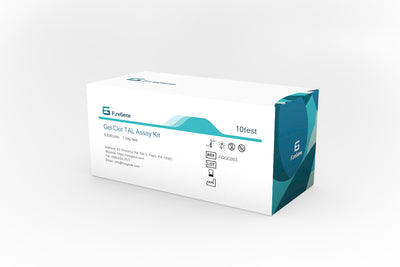
# Gel Clot Endotoxin Test Kit: Principle and Applications
## Introduction
The Gel Clot Endotoxin Test Kit is a widely used tool in the pharmaceutical and medical device industries for detecting bacterial endotoxins. This test plays a critical role in ensuring the safety of injectable drugs and medical equipment by identifying potentially harmful pyrogens.
## Principle of the Gel Clot Method
The Gel Clot Endotoxin Test operates on a simple yet effective biological principle. It utilizes Limulus Amebocyte Lysate (LAL), a substance derived from the blood cells of horseshoe crabs. When LAL comes into contact with bacterial endotoxins, it triggers a coagulation cascade that results in gel formation.
The test procedure involves:
– Mixing the sample with LAL reagent
– Incubating the mixture at a controlled temperature
– Observing for clot formation
– Inverting the tube to confirm gel formation
## Key Components of the Test Kit
A standard Gel Clot Endotoxin Test Kit typically includes:
1. LAL reagent (lyophilized or liquid form)
2. Endotoxin standard for positive control
3. LAL reagent water (LRW) for reconstitution
4. Positive product control
5. Test tubes and necessary accessories
Keyword: Gel Clot Endotoxin Test Kit
## Applications in Various Industries
### Pharmaceutical Industry
The Gel Clot method is extensively used for:
– Quality control of parenteral drugs
– Water for injection testing
– Raw material screening
– Finished product release testing
### Medical Device Manufacturing
Medical device manufacturers rely on this test for:
– Evaluating device extracts
– Validating cleaning processes
– Monitoring production environments
### Biotechnology
In biotech applications, the test helps in:
– Monitoring recombinant protein products
– Testing cell culture media
– Evaluating purification processes
## Advantages of the Gel Clot Method
The Gel Clot Endotoxin Test offers several benefits:
– High sensitivity (typically 0.03-0.25 EU/mL)
– Simple visual interpretation
– Cost-effectiveness
– Reliability for pass/fail determinations
– Minimal equipment requirements
## Limitations and Considerations
While highly effective, the Gel Clot method has some limitations:
– Semi-quantitative nature (only provides endpoint data)
– Subjective interpretation of results
– Limited dynamic range compared to chromogenic methods
– Requires careful handling to prevent contamination
## Regulatory Compliance
The Gel Clot Endotoxin Test meets various pharmacopeial requirements including:
– United States Pharmacopeia (USP )
– European Pharmacopoeia (EP 2.6.14)
– Japanese Pharmacopoeia (JP 4.01)
## Conclusion
The Gel Clot Endotoxin Test Kit remains a fundamental tool for endotoxin detection despite the availability of more advanced methods. Its simplicity, reliability, and regulatory acceptance make it an essential component of quality control programs in healthcare product manufacturing. As technology advances, this classic method continues to serve as the gold standard against which newer techniques are often validated.